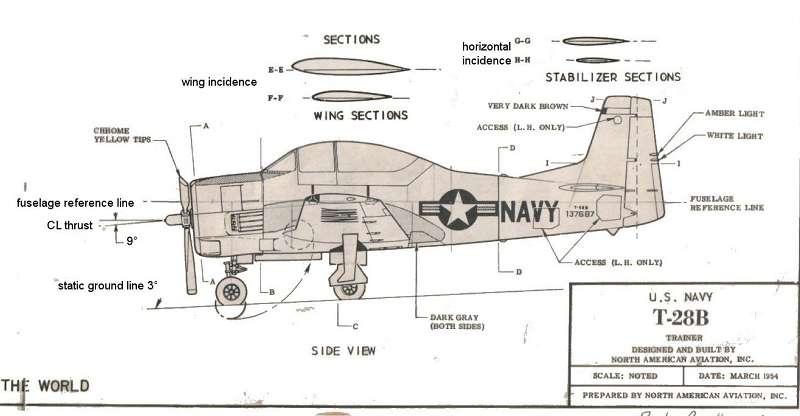teamgrumman(at)yahoo.com
Guest
|
 Posted: Sun Oct 31, 2010 10:56 am Post subject: Engine "THRUST" angle: Update Posted: Sun Oct 31, 2010 10:56 am Post subject: Engine "THRUST" angle: Update |
 |
|
This is indeed good information. Thanks Ned. I've been asking for dimensions for at least 4 years.
As stated, before I started the Jaguar cowling, I used 1 shim on each mount. I picked one on each mount because I figured I could remove one and add one to each if necessary. I used an AG5B cowling for the bottom half and fabricated the top from foam. Not sure how Ned's cowling got so much down angle. Unless the plane I used as a mock up was wrong.
The engine mounts, vibration isolators (shock mounts), and installations in general must have a lot of tolerance stack-up. Otherwise, they'd all take the same number of shims . . . always.
In your 'field alignment procedure,' you state that the proper alignment is to the front of the nose bowl. I've seen cowlings forced out of alignment by 1/4 inch. How does one tell if the cowling is right?
Since I didn't have Ned's plane to do the initial fitting (he wanted it done in a week), I pre-fitted the cowling to an AA5B that I first aligned to the cowling on my plane. As it turns out, the cowling attachment nutplates on Ned's AG5B are not in the same place as the nutplates on an AA5B. For some reason, they have been changed. The result was that the holes I drilled into Ned's cowling before he brought his plane were not aligned with the nutplates on Ned's plane.
Questions for Ned
(1) What were the shims count in your final set-up? I forget.
(2) What are they after the alignment?
(3) How did you align your engine? Really. Did you get another cowling and install it then align the engine to that?
(4) If not, What was your procedure?
The 39.225 inches alignment dimension is fine for the stock cowling. What I need is the dimension to the face of the crank flange.
It's curious to me what the final result will be. I did a search on engine thrust angle.
"Down thrust is a way of reducing the need to retrim an airplane with power changes. As you increase airspeed by adding power the stabilizer will pull downward with a stronger force, and an airplane will climb. You can either add more down elevator to reduce the climb or you can let the extra power pull the nose down. There is an oft-overlooked benefit of downthrust. When added to an airplane it also lowers the angle of attack that causes P-factor, thus reducing the P-factor, and often eliminating the need for right thrust because the P-factor has been neutralized in the cruise condition."
Ned had stated to me that his plane wanted to go to the (right? or was it left?) when he got it. He said it didn't fly straight at any rate. My plane has no trim tabs and flies straight with the same cowling. To me, that is interesting! Does the prop have that much of an effect? Could it be the 3-blade prop?
The RV guys set zero thrust by first leveling the plane, then putting a level on the rocker boxes or push rod tubes. I'm going to try that.
Remote control guys have a whole process they go through since they are on the outside looking it.
Some planes have a lot of engine down thrust. See attached. The Corsair, Grumman Wildcat and Hellcat all have a large down thrust.
I'm really curious which is faster on a Tiger.
| | - The Matronics TeamGrumman-List Email Forum - | | | Use the List Feature Navigator to browse the many List utilities available such as the Email Subscriptions page, Archive Search & Download, 7-Day Browse, Chat, FAQ, Photoshare, and much more:
http://www.matronics.com/Navigator?TeamGrumman-List |
|
| Description: |
|
| Filesize: |
38.31 KB |
| Viewed: |
736 Time(s) |

|
|
|



